by bria4123 on February 29, 2012
But I’ve been looking through rosy-colored glasses in the last 2 posts. China is very multifaceted, and hutong life comprises only one of its traditions.
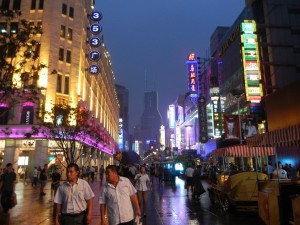
There’s no mistaking Shanghai’s Nanjing Road for a quiet hutong, but the everything-for-sale mentality in Shanghai is also an old part of China’s heritage. [click to continue…]
by bria4123 on February 29, 2012
I sat on my bed in a Beijing hutong, and got ready to tuck in for the night, but I kept hearing a faint motor.

As I lifted my feet up to put them under the sheet, I noticed this little emperor curled next to me, purring. I never saw him because his white fur matched the sheet’s color–I almost sat on him. Because hutongs have a front gate that can be locked, people inside can sleep with their doors open. This is very handy in Beijing’s toasty summers. The open doors allow the residents to mingle intimately, and get a deep feeling that all lifeforms are integrated.
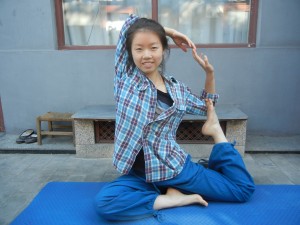
And because all the buildings face a courtyard, people share their activities. [click to continue…]
by bria4123 on February 28, 2012
Life in a traditional Chinese home (hutong) is intimate to an extent that can be hard to appreciate unless you’ve lived in one.

The buildings face each other across a courtyard (or multiple courtyards in wealthier homes), and all are protected by an enclosing wall with a gate that’s ideally on the south side. Come inside (if you have good intentions), and be enveloped in traditional Chinese life. [click to continue…]
by bria4123 on February 28, 2012
After several posts on Ancient Egypt, let’s head east. Ancient China and Ancient Egypt might seem similar on the surface.
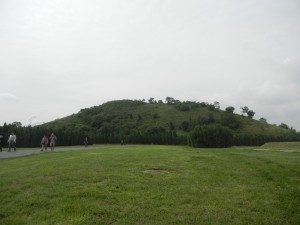
Both cultures developed ideologies about the central place of their king in the universe, invested in massive burial cults for them, and built huge pyramids (including the one pictured above for the Han Dynasty emperor Jingdi (188-141BCE). But Chinese civilization has had unique thought patterns, which can’t be reduced to other cultures. [click to continue…]
by bria4123 on February 26, 2012
And this looks even less impressive. After King Menkaure built the third pyramid at Giza, pyramids became even smaller.
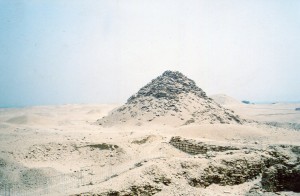
But equally monumental things were happening under the surface. Ancient Egyptians opened up more horizons as they developed new media. [click to continue…]
by bria4123 on February 25, 2012
Yes, another Angkor Wat shot. But it bookends well with picture in the last post on Angkor Wat.
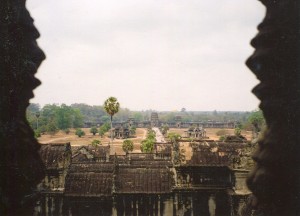
This photo looks out from the upper terrrace, over stacks of tiled roofs, and towards the western entrance. The moat that I took the previous shot from is on the other side.
In contrast with the simple forms in Egyptian monuments, most Khmer temples revel in abundance. Sadly, the time each person can spend in Angkor Wat’s upper terrace is limited now. I was very lucky to be there just before the time limit, and I was able to ascend the divine mountain 7 times and savor it for as long as I wanted. One time, the afternoon breeze blowing through those elegant slats caressed me until I got so sleepy that I couldn’t do anything except put my head on my backpack and snooze. When I woke up, a priest walking by looked down at me and gently smiled.
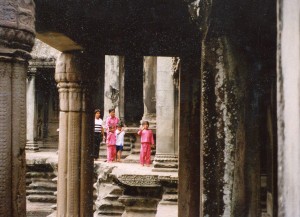
I thought the kids in the above shot didn’t know I was about to take their picture. The longer I lingered at the top, the more meetings I had with Cambodians, and with visitors from countries all over the world. The elegant art forms up there are supposed to represent the abode of the gods on Mount Mehru. But the friendly Cambodians and the diversity of tourists created an equally savory human landscape. Both blended more and more as I stayed and gave me some of the best travel memories I’ve ever had. Even the bats (one had peed in my face) were beautiful now.
by bria4123 on February 24, 2012
Menkaure’s pyramid at Giza may not look as impressive at first glance. It’s 204 foot height is less than half of Khufu’s (the Great Pyramid), and Khafre’s.
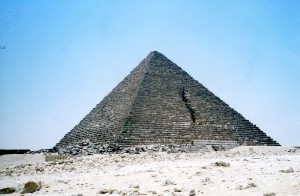
But Menkaure’s pyramid has unique facets that make it well worth exploring too. [click to continue…]
by bria4123 on February 23, 2012
As the pharaohs built their pyramids at Giza, another major architectural form was developed. It later replaced the pyramid as ancient Egypt’s main type of royal construction project.
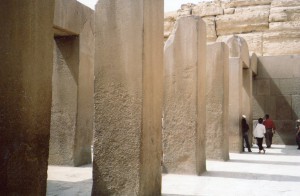
The above shot’s from the inside of King Khafre’s valley temple. It’s one of three temples associated with his reign. Ancient Egyptians increasingly devoted more resources to temple construction, and temples later became their largest buildings. Khafre’s temples were huge advancements in this direction. [click to continue…]
by bria4123 on February 22, 2012
As the Ancient Egyptians built the pyramids at Giza, they developed other media for their beliefs.
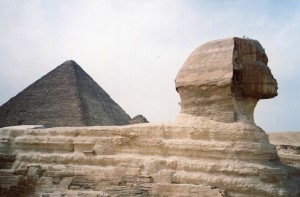
And some of these new media influenced world history as much as the pyramids did. [click to continue…]
by bria4123 on February 22, 2012
King Khufu’s Great Pyramid at Giza first stood alone. Imagine its glory as it rose 481 feet from a cliff that presided over the Nile and the royal city of Memphis, within sight of Heliopolis, where the sun cult was centered. And then–
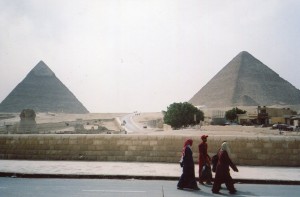
Khufu’s son Khafre erected his pyramid next to it. No two buildings have better complemented each other. Let’s explore the son’s work. [click to continue…]












